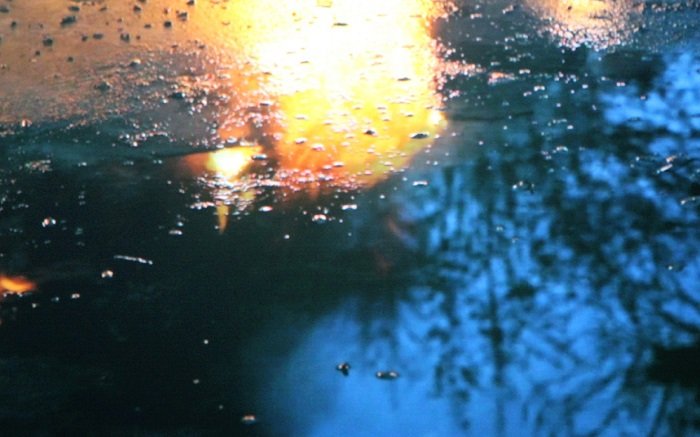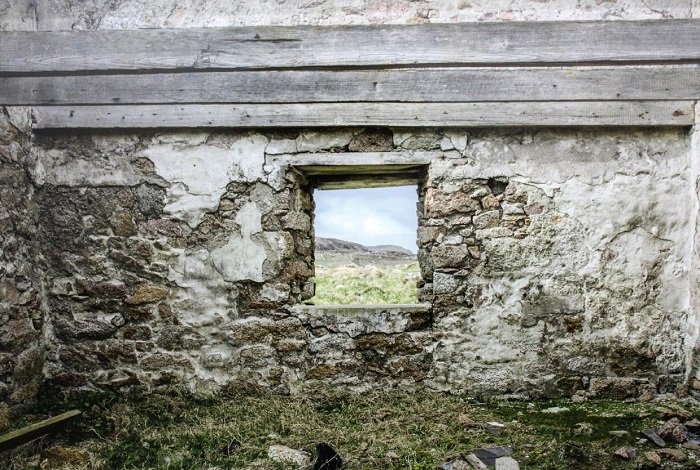Willie Doherty | Memory as a Vehicle to Survey Liminal Spaces
To my mind it seems clear that those who have no memory have the much greater chance to lead happy lives. But it is something you cannot possibly escape: your psychological make-up is such that you are inclined to look back over your shoulder. Memory, even if you repress it, will come back at you and it will shape your life.
-W.G. Sebald
Willie Doherty is a world renowned Irish artist born in Derry in 1959, and continues to work there as a Professor of Video Art in the University of Ulster. He is a much celebrated artist who represented Northern Ireland at the Venice Biennale 2007 and twice has been nominated for the Turner Prize. Visually led, his work is comprised mainly of photographic and filmic elements, often maintaining autobiographical references. This individual expression however is by no means the primary purpose, instead Doherty is fascinated by themes of collected recollection and trauma. This article seeks to examine the voyeuristic power of his lens through recent Irish exhibitions, investigating Doherty’s utilisation of memory as a device to access liminal spaces, whilst acknowledging its subjectivity.
Willie Doherty’s ‘Remains’ (28.4.16 – 27.11.16) is an integral facet of the IMMA collection A Decade. The purpose of this assembly is to provide insight into how the National Collection of Modern and Contemporary Art has developed over the last decade, aiming to inform budding conversations concerning visual culture in Ireland, with the intent to maintain public accessibility. The works selected explore a plethora of themes ranging from notions of globalism and human connectivity, to questions of memory, place and identity. The collection features a wide range of components including performance, prints, photography and film in order to convey the abundance of artistic approaches encapsulated within contemporary art. ‘Remains’ is a striking fictitious film inspired by real events, set in the uneasy streets of Derry with a central theme of punishment and retribution. Comprised of lengthy tracking shots showing visuals as mere backgrounds, the violent imagery is instead conjured by Adrian Dunbar’s sombre and irresolute narration:
It has become a distant memory
Taken on the characteristics of a dream
At times I am unsure if it really happened at all
On considering the piece Susan McKay comments on Doherty’s pull between nostalgia and history, having collaborated on an earlier project ‘Lost Boys’ (2013) which served as a rousing preamble. In most of his works Doherty is pulled toward marginal and discarded places, and ‘Remains’ is no different, ultimately drawing us to a Derry we know regardless of whether we choose to recognise it. The film imbibes a cyclical message of generational conflict as the narrator, a father, recalls the compulsive repetition of causation and legacy: “like father like son, isn’t that what they say”. A sombre description of how he as a teenager was targeted and punished for crimes unspecific becomes an event that was to be later repeated years later when his own son was similarly assailed. This narration is accompanied by a steady ream of littered streets and graffitied nooks, the father’s description of this horrific incident is visceral yet poetic:
Face in the dirt, foot in the back, ankles pinned down,
the cold dark metal, the soft tissue,
the entrance wound, the knee cap, the exit wound

A concise and impactful tale, an old wound reopened, the narrator is caught in the devilish dichotomy between forgetting and recollecting. The camera winds on as the narrator circles unanswerable questions of the past, muddied with the impression of lessons-that-needed-learning. When the narrator falls silent, the externalised memory made distant and estranged, the film cuts to a roaring shot of a car ablaze. The spectator is left considering the dying embers, a parting both pensive and deafening. When asked to comment on the work Doherty confirmed “I revisit these same locations in ‘Remains’ to explore the idea of the generational nature of the conflict, how it passes through families and the vicious circle that people can get caught up in”.
In September, Willie Doherty led an Artist Talk at IMMA regarding the unfolding and interdisciplinary discourse of memory. He explained how his work largely investigates the problems of recollection, torn between private and public memory, and the entwining role of language. It could easily be argued that Doherty’s work reinforces the idea that there is no alternative memory other than the remembrance of wounds, that following trauma the individual is haunted by the unresolved aspects of past distressing present. Doherty is plagued by the ethics of memory, and its complex relationship with forgiveness. The duality he favours is revisited as he is caught between ideas of what should be remembered and what should be forgotten, beset by the problems of both. As he was heavily inspired by Michael D. Higgins’ speech ‘1916 and the Ethics of Memory’, he quotes: “It is only through acts of imagination and creativity that we can prevent forms of tragic memory from colonising the future”. Doherty emphasises the centrality of an active imagination in renegotiating traumatic experiences, how it can be used to work beyond the cycle of traumatic memory into another imagined space.
Willie Doherty’s ‘Loose Ends’ (3.9.16 -19.10.16) is currently being exhibited in Kerlin Gallery, Dublin. The exhibition contemplates the act of remembering, casting a glance back at the 1916 Rising. In these works Doherty sought to muse on ideas of unfinished business, problematic aspects of history that hadn’t been neatly folded away in relation to the Rising. The installation is made up of photographic diptychs accompanying a two-screen video installation, narrated by Sean McGinley. By utilising elements of aural and visual, the exhibition is doubly encompassing, mirroring the duality of the two locations used: Moore Street, Dublin and Donegal’s Gola Island. These spaces are separate yet connected through country-wide historic events, acknowledging the element of chance present in connecting people to history. The tunnelling camera incorporated in the film examines trance-like the corrosive effect of time on national and individual identity. The actions of a previous generation form ‘vapours of the past’ persisting, aspects of ideology and myth forming an alternative take on related issues of memory and place.

The film’s narration accompanies a notable mosaic shifting glazing a myriad of landscapes, both rural and urban. The narrator describes how remnants of the past move through structures, a force permeating thick cemented walls, layers of wallpaper and plaster. This power is eroding, destructive, and leaves behind only a fine dust “dissolved, lime-washed by numerous days and nights / then bleached in the sun and blown away to nothing”. This dust is charged however, holding traces of a past life to be reabsorbed, altering the makeup of newer things “loose ends, lost perspectives, melted, overlapping upon the present, deformed into something unrecognizable, unknown”. Ultimately the viewer is led to the conclusion that the past is smothering, despite efforts to keep it out of sight, dilute or destroy it, “it’s worse than the flames, consumes all, leaving only a residue”.
At this point it is notable to reference Doherty’s comment on the direct lack of people visually included in a large percent of his work, opting to let the places and the politics behind them speak out and take their own effect. His reluctance to provide any one concise answer mirrors the disinclination of the political and traditional past to be resolved neatly. In his portrayal of historically charged spaces Doherty seeks to move away from opportunistic journalistic photos, where everyone is portrayed as a victim of circumstance and ultimately providing no real understanding. When in conversation with Barbara Dawson (2011) Doherty affirmed that “making this work was a personal resistance to feeling like a victim” and as McKay highlights he is searching for a way his art can undermine cultural constrictions.
As outlined in an interview with Christopher Coppock the aim of Doherty’s photography is “to try and reflect the way the terrain creates an understanding of the place”. This aim is chased again in ‘Ghost Story’ exhibited in Ulster Museum Belfast as part of A New Order: Twentieth Century Irish Art collection. Similarly to the other works detailed above Doherty raises questions as to whether human life can thrive in spaces once occupied by evil:
I wondered what had happened to the pain and terror that had taken place there.
Had it been absorbed or filtered into the ground, or was it possible for others to sense it as I did?
This reinforces the notion that the memory of suffering in a place can outlive those who directly experience it, those eager to pack it away and forget. The negative energy instead secures longevity in recollections, tales and echoes “mossy damp corners never seemed to dry out, in winter or summer”. For all the force of memory in these works critic Jean Fisher notes that to view Doherty’s work is to get caught in the act of surveillance itself. The spaces he portrays are in actuality a trap for the viewer, the tandem between location and spectator emulates that of memory and identity. Fischer remarks that what is most discomforting of Doherty’s vacuums, blind spots and absences “is the lack of reciprocal gaze”. Surveying his work does not provide a mirror with which the viewer will discover something of themselves, instead it works to snare them in this glance black.
To reflect upon the ethics of memory is, at first sight, a puzzling task. This is so because memory is not in the first instance an action, but a kind of knowledge like perception, imagination and understanding. Memory constitutes a knowledge of past events, or of the pastness of past events.
-Paul Ricoeur
Essays Referenced:
‘And so they are ever returning to us, the dead’ Willie Doherty in Derry
-Susan McKay
Seeing beyond the Pale: The Photographic Works of Willie Doherty
-Jean Fisher
Many thanks to the helpful staff at Kerlin Gallery, Dublin; IMMA, Dublin; Ulster Museum, Belfast.
Featured Image: Still from Willie Doherty’s ‘Remains’ | Jessica McKinney
